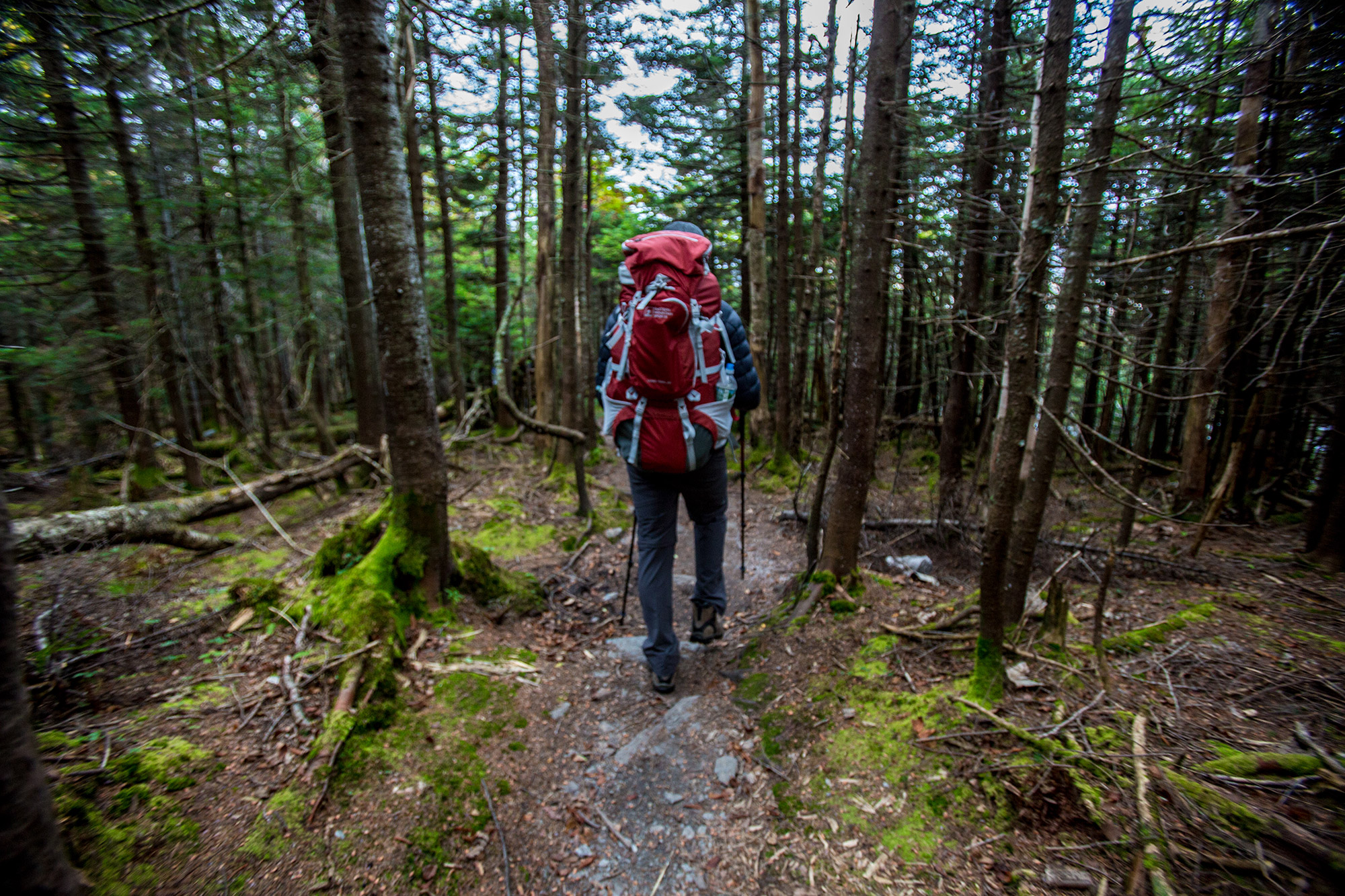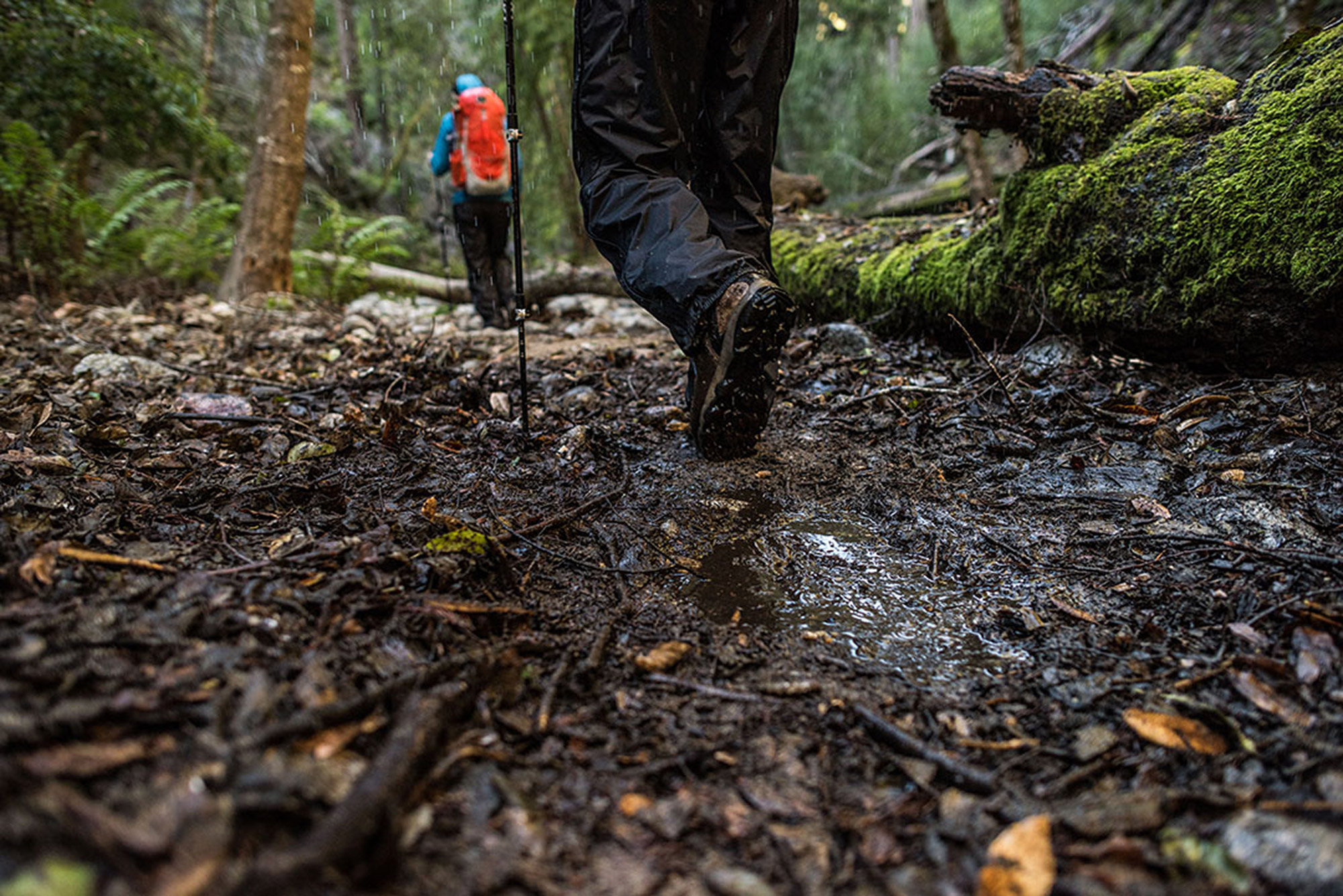Spring’s arrival is often a welcome change for the hikers, backpackers, and weekend warriors among us. It means that we can finally shed those cumbersome layers of wool and down, hit our favorite recently-thawed trails, and enjoy some warm weather for the first time in months. But, with spring comes mud, and a lot of it.
Hiking through the mud presents a unique challenge. Not only can it be exceedingly uncomfortable to trudge through ankle-deep puddles, but it can also increase your risk of injury and have a disastrous impact on the trail itself. Thus, it’s important to know how to responsibly and safely enjoy a springtime trail. Here are a few hacks to make sure you’re maximizing fun and minimizing impact during your mud season adventures.

1. Bring the Proper Footwear and Clothing
And, make sure you don’t mind it getting soaked and dirty. Springtime hiking might not be the time to break in your brand-new boots, unless you know how to maintain them, as muddy conditions can potentially damage your footwear. Instead, reach for an older, sturdy waterproof pair that you’re not as concerned about potentially wrecking. In addition, it’s always a smart idea to invest in some high, water-resistant gaiters to keep mud and water from seeping in. You always want to keep your feet dry and comfortable when you’re hiking, especially when you’re walking through the cold spring slush.
Footwear aside, you’ll want to wear a good, sturdy pair of hiking pants that can stand up to the elements and have a water-resistant finish to keep the mud from caking on your legs. You’ll likely be getting a little wet, so look for pants that are made of a quick-drying fabric, like EMS’ Men’s True North Pants, to keep you comfortable on the trails. A moisture-wicking hiking shirt and waterproof top are always a safe bet, too.
2. Carry Trekking Poles and Mind Your Footing
Anybody who’s descended a steep, muddy trail knows how quickly your feet can fly out from underneath you without warning. Not only does a slick trail increase the chances of an embarrassing (and wet) fall, it also heightens your risk for a potential injury. For this reason, it’s important to use trekking poles for the added stability and traction they provide. Even if you’re not otherwise a big fan of trekking poles, bring them on muddy hikes. They help you keep your balance, minimize slips, and prevent falling altogether on a precarious descent.
On the topic of footing, it’s a good idea to make sure your shoes are tied snug—ever had a boot stuck in the mud and then tried to pull it out?—and to keep a close eye on where you’re stepping. Walk using smaller strides than you normally would to help maintain balance and keep sliding to a minimum. If there is any ice remaining on the trail, you should bring your MICROspikes, just in case. Also, when hiking in the mud, you should try to go at a slower pace than you normally would. In these conditions, being deliberate and mindful of your footing benefits you more than speed.

3. Muddy Trails are Susceptible to Erosion, So Stick to the Middle
Once the winter snowpack has melted, trails are at their soggiest and most saturated. As a result, they are more vulnerable than ever to serious erosion damage. For this reason, it’s super important that you stay on the trail’s center and tread as lightly as possible. It can certainly be tempting to walk on the trail’s edges, or off it entirely, in order to go around that large puddle blocking your way. But, doing so would widen and erode the trail. So, do the right thing, and stay on the trail regardless. If you’ve heard or read that a trail is in particularly rough shape in the springtime, consider hiking elsewhere, until the ground has hardened up a bit.
In addition to sticking to the center of the treadway, do your best to step onto rocks whenever possible. Stepping from rock to rock helps minimize trail damage—not to mention, it keeps your footwear dry and in better condition. The conscious springtime hiker will always understand that the muddiest trails are also the most fragile.
4. Consider the Time of Day and Weather
Springtime is known for its fickle weather. Although temperatures can become warm during the day, evenings and nights can still get very cold—occasionally dropping below freezing. This means that the trail is likely going to be softer around midday and will be at its firmest early in the morning and later in the evening.
During mud season, always be aware of these temperature changes. You may want to plan for an early morning hike, as opposed to one in the late afternoon. The trail will be firmer, making for a less messy and more comfortable experience. Time of day aside, you’ll also want to keep a close eye on the weather forecast beforehand. A steady rain can turn an already-muddy trail into a Slip ‘N Slide. If it looks like it’s going to pour, it might not be a bad idea to reschedule your hike for a sunnier day.

5. Plan for the Post-Hike
One of the best ways to make hiking in the mud a favorable experience is to know exactly what you’re going to do once you’re done. For starters, you should always bring clean socks, extra shoes, and dry clothes to change into after. Seriously, there’s no better feeling than getting off the trail and having warm, fresh clothes and footwear to put on. Conversely, there’s no worse feeling than a soggy drive home. It’s also important to think about where you’re going to put your soaking wet, mud-caked boots and clothes when you get back to the car. Keep plastic garbage bags handy, or use a tarp to line the trunk as you put them away.
When you get home, wash your muddy clothes right away to prevent further damage and mildew from building. And, even though it might not be fun, remember to thoroughly clean your footwear! Leaving the mud on can dry out the fibers, cause cracking, and ruin your footwear’s weatherproofing altogether. Take care of these post-hike essentials, and you’ll be ready to go for next time.
Lucas Kelly
Luke Kelly is a writer and landscape photographer from Red Hook, NY. He says he’s a traveler first, having spent four summers working as a fisherman in Alaska to fund his adventures across the globe. His main goal is to inspire people to get outside, be active, and to explore new places. When he’s not out taking pictures, Luke can usually be found on his paddleboard, road bike, or skis depending on the season. You can follow his trips on Instagram @lukekellytravels.




